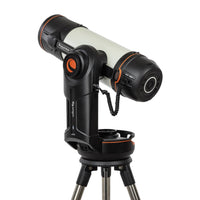
Jump Start STEM Learning with the August 21 Solar Eclipse
The Total Solar Eclipse on Monday, August 21 is an event you don't want to miss! Even if you can't get to totality, the entire continental U.S. will experience at least a partial solar eclipse.
It just so happens that August 21 is the first day of school for Denver Public Schools, and many other districts. Other districts will have already been in session for a week or two. While some parents will pull their kids out to witness the eclipse, most kids will be in class. This represents an amazing opportunity to take the classroom outside, and take science education to a whole new level!
Making Sure Schools Are Prepared
The last total solar eclipse over the U.S. was 38 years ago, passing across the Northwest and into Canada. While some schools and teachers took great advantage of this opportunity, others went into lockdown, and would not let the students outside to view the eclipse for fear of them looking at the sun. They were simply unprepared, and didn't have the basic information to make eclipse viewing a fun, safe, and educational event.
I want to do what I can to make sure those lockdowns don't happen. I want to make sure teachers and school districts make the most of this eclipse event, and have the knowledge and materials to make this a safe and amazing learning experience for their students. That's why I put together the Classroom Eclipse Kits: To provide the basic knowledge, along with certified solar eclipse glasses to as many schools, teachers, and ultimately students as possible!
A Once In A Career Teaching Opportunity
What better way to jump-start a new year of STEM? A solar eclipse brings science and astronomy to life like no other natural event can. The fact that this eclipse is also occurring around mid-day across the U.S. means the timing is absolutely perfect to turn this into a full day of science and arts education and discovery. (Under the path of Totality, the whole duration of the eclipse stretches for about 2 hours and 40 minutes!)
You'll never have a better opportunity to teach about the orbits of the Earth and Moon. Teaching the phases of the Moon is a natural fit. If your school is under the path of totality, you can also teach about the solar corona, and even see other planets and stars come out during totality.
A pinhole projector is a great project to demonstrate some of the the properties of light, while providing safe viewing of the partial phases of the eclipse. (Building cardboard box eclipse viewers is a wonderfully fun activity.)
You've heard of that guy Albert Einstein, right? Did you know it was an experiment conducted during a total solar eclipse in 1919 that provided the first observational evidence for his theory of General Relativity? It was after this experiment, and it's results, that Einstein became an overnight celebrity. Break out that mad scientist wig, and blow some minds!
Safe Eclipse Viewing
There are two main ways to view a solar eclipse: Directly, with certified eclipse glasses or other safe filters. and indirectly, with a projection of the sun onto some type of screen. If you have access to telescopes with solar filters, these can also be a fantastic resource. Just always be sure the solar filters are securely affixed to the front of the telescope. Use take to make sure they stay in place.
We all know not to look directly at the Sun, but that's exactly what we want to do during a solar eclipse. The safe way to accomplish this is with certified solar eclipse glasses. These glasses use a special mylar material that blocks 99.99% of visible light, plus 100% of the IR and UV light. With a pair of eclipse glasses on, you can comfortably and safely watch the solar eclipse from beginning to end. You can also safely view the fun through Eclipse Glasses where is is no eclipse, but the Sun appears so small (the same size as the full moon) there typically won't be much to see.
Sunglasses are deceptively named. You absolutely cannot look at the sun with sunglasses, only eclipse glasses. The one other acceptable material is #14 welder's glass. DO NOT use lower numbered welder's glass - it will not block enough of the UV and IR or visible light to be safe. A more complete rundown of safe viewing information is available on the Eclipse Safety page.
Resources
The NASA Eclipse Website is full of free digital teaching resources.
- K-12 Educator Resources
- NASA Space Place (upper elementary)
- NASA Eclipse Kit (not affiliated with EclipseKit.com)




